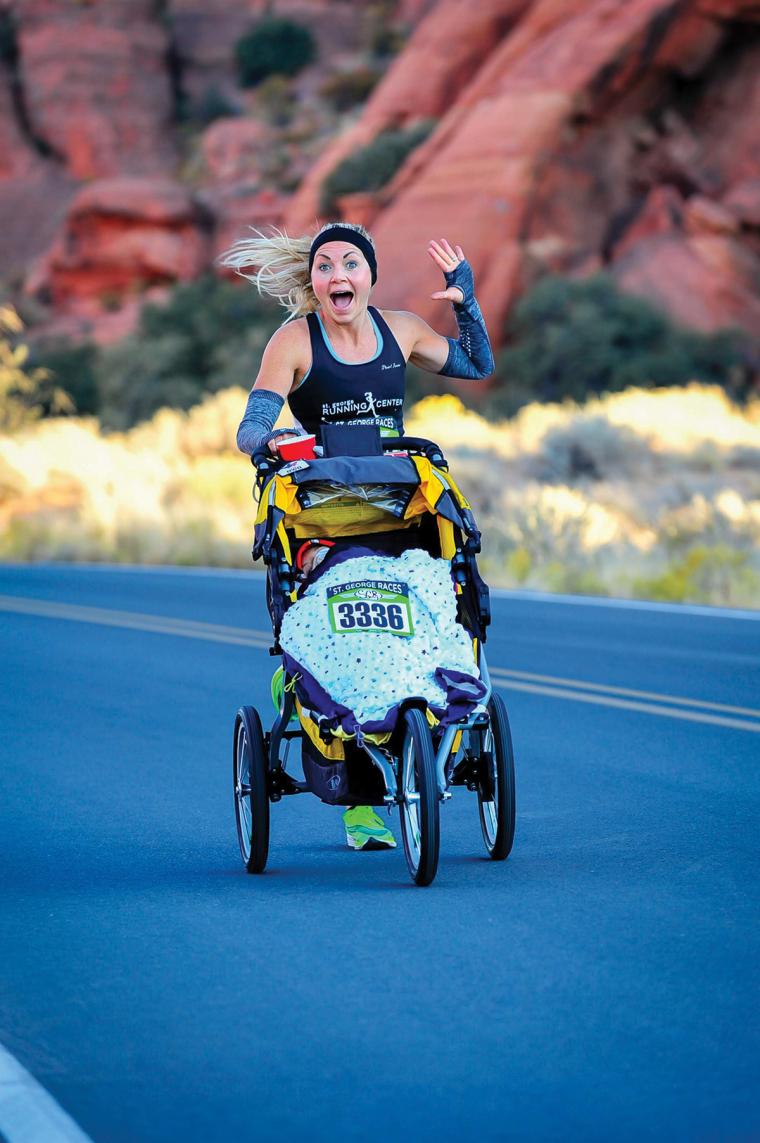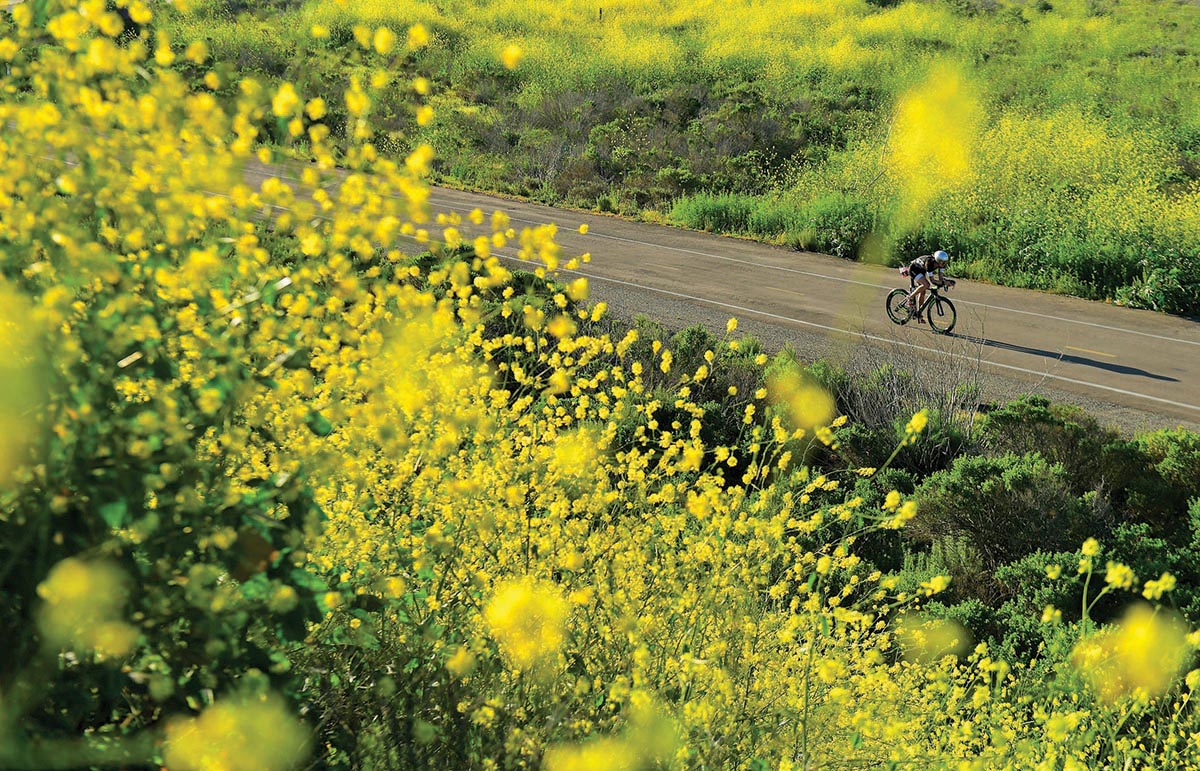

“We anticipate local road races will use chip timing and staggered start times to help keep runners at a safe distance from each other, while cross country races will likely run in smaller packs,” says Amanda Heidecker, director of sports for Florida’s Visit Tallahassee. “Every part of running events, including pre-race check-in, packet pick-up and post-race events, will also be modified with additional protocols and precautions to keep all participants and staff as safe as possible.”
Safety, justifiably so, is the number one priority — even if that results in major disruptions to the way things used to be.
“COVID-19 has made the sports tourism industry take a step back and really look at the finer details of running an event. There will be a lot of changes that take place over the coming months and years. It may still be too early to know what changes will become permanent,” says Austin Rippeto, sports sales manager for the Jefferson City (Missouri) Convention & Visitors Bureau. “One of the greatest challenges that organizers and destinations will face is gaining consumer confidence and letting people know that destinations are willing and able to provide safe and healthy events with proper guidelines and regulations in place.”
That will take time. In Snohomish County, Washington, for example, races and other sporting events might not begin to happen until the final phase of a four-phase plan to reopen the state, according to Tammy Dunn, executive director of the Snohomish County Sports Commission. That’s when gatherings of more than 50 people will be allowed to take place, with physical distancing protocols in place. Even then, races with fewer participants are likely, she says, which could deter some runners from signing up.
On the other hand, it makes sense that running events would be among the first organized competitions to return on a large scale.
“I think people have a pent-up demand for sports,” says Scott Glinski, senior business development manager for the Palm Beach County (Florida) Sports Commission. “Endurance running and competitive running certainly lend themselves to social distancing protocols and are most likely to be back on track faster.”
“Sports, in general, bring a smile and sense of comfort to a lot of people in this country,” adds Mike Malach, executive director of the Ann Arbor (Michigan) Sports Commission. “I would expect us to utilize the sporting world to help our community get back to some sense of normalcy for the remainder of 2020 and into 2021.”
“I truly believe amateur sporting events will represent the segment of tourism that will help bring us out of this pandemic and provide some economic relief,” echoes Mike Guswiler, president of the West Michigan Sports Commission. “Many of our running events scheduled in the spring or summer have been pushed back into the fall, and [organizers] have worked with each other to ensure there will be room [for everyone] on the fall calendar. We are working as a community, state and industry to share best practices and new protocols to ensure a safe atmosphere for competitors and their families.”
With that overarching mission, and as event organizers begin planning for the future and seeking host cities, here’s a rundown of what eight running destinations offer.
Akron, Ohio
A diverse topography — elevations climb to more than 1,300 feet above sea level — helps make Akron an ideal locale for a variety of running events, according to Jim Mahon, vice president of marketing and brand management for the Akron/Summit Convention & Visitors Bureau. “Relatively flat, urban roads wind out into more challenging, rolling spaces,” he says.
Among the city’s highest-profile events is the Akron Children’s Hospital Akron Marathon Race Series, which includes distances ranging from one mile to a full marathon and attracts participants of all fitness levels. Although COVID-19 forced the cancellation of the series’ National Interstate 8K & 1 Mile events on June 27 and the Goodyear Half Marathon & 10K on August 8, as of early June the FirstEnergy Akron Marathon, Half Marathon & Team Relay were still set to go on September 26. The marathon is a Boston Marathon qualifier and sells out every year.
Meanwhile, the Akron/Summit CVB has developed akron[RE]bound to “underscore the interconnectivity of the hospitality ecosystem with overall local employment, education, quality of life and positive economic impacts,” according to the effort’s website. “The Akron/Summit CVB is committed to doing our part in sharing information and developing strategies to regain the momentum our community has worked so hard to achieve.”
Ann Arbor, Michigan
Adjacent to the Huron River, Ann Arbor offers an abundance of paved courses and trails for various races, according to Mike Malach. They include such annual events as The Big House 5K, Shamrocks & Shenanigans and the Dexter-Ann Arbor Run.
The Ann Arbor Marathon, a Boston Marathon qualifying event, was canceled in 2020. It originally was scheduled for March 22, right as the coronavirus pandemic took root in the United States. Other runs, such as the popular Ann Arbor Firecracker 5K (which traditionally takes place on the Fourth of July) were moved to virtual events in which participants could log their own times.
“Most of the runs in the area have gone virtual because of the pandemic,” Malach says. “This has created some very unique opportunities for participants.”
Jefferson City, Missouri
Located near the center of the state, Jefferson City boasts a long and rich running tradition, having hosted the Missouri State High School Activities Association’s State Cross Country Championships for 42 straight years between 1976 and 2018. It also is home to the Jefferson City Triathlon — which, as of early June, was still slated for August 30.
“What separates Jefferson City are community partnerships and volunteers that make all the events a success year after year,” Austin Rippeto says, adding that obstacle course races have become a local specialty. “The relaxed atmosphere of the OCR and themed races has brought in a new demographic that might not be comfortable competing in a traditional 5K, half-marathon or triathlon. We have seen major growth in signups for the Prison Break Race.”
That event, arguably one of the most unusual runs in the country, is a five-mile combination run and obstacle course that begins inside the now-decommissioned Missouri State Penitentiary, which housed Martin Luther King Jr.’s assassin, James Earl Ray. The course continues through mud and over hills and concludes at a restaurant called Prison Brews.
Palm Beach County, Florida
Ask Scott Glinski what makes Palm Beach County an idea destination for running events, and the first thing he’ll mention is the weather.
“Our average year-round temperature is 78 degrees,” he says. “We also have some amazing running trails and a beautiful coastline, which make for unbelievable scenery throughout the entire racecourse.”
Among the highest-profile running events Palm Beach County hosts is the Palm Beaches Marathon, an early-December festival consisting of full and half marathons, a 5K, a relay race and a fitness expo. The event attracts an estimated 4,000 runners, and the marathon is a Boston qualifier. Palm Beach County also has hosted events as diverse as Spartan Races and NCAA cross country championships.
“I think race participants expect thoughtful course design elements and unique race experiences now more than ever,” Glinski says.
Snohomish County, Washington
Snohomish Running Company manages four major annual runs, each offering a charity component. They are the Everett Half Marathon and 10K (slated for April 2020 but canceled because of COVID-19), the Snohomish Women’s Run, the Evergreen Half Marathon and 5 Mile, and the Snohomish River Run.
Thanks to vast scenery — from beaches to mountains — the county also hosts a variety of trail runs and endurance runs.
“Results show that over 60 percent of race participants are female, and participants range in age from late teens to late seventies. I have also noticed more English-as-a-second language participants in the past couple years,” says Sarah Maxwell, co-owner of Snohomish Running Company. “I think that the scene is changing because more people are trying it and finding confidence that they didn’t know they had. Running is a personal thing, but it is also a great way to connect with others.”
Tallahassee, Florida
Tallahassee is home to Apalachee Regional Park, a multi-use destination that includes one of the few sites in the country designed specifically for cross-country running, according to Amanda Heidecker. “This pristine course can host small and large running events and was designed to give runners the opportunity to run on several types of surfaces,” she says. “The facility features numerous course and distance options through rolling hills, lowlands and pine forests.”
Since its inception in 2009, the park has hosted more than 50 regional, state and national cross-country championships, bringing tens of thousands of runners to Tallahassee. The park is undergoing a $3 million dollar construction enhancement project, Heidecker says, which includes the addition of a permanent finish line structure, an awards stage and wildlife viewing platforms.
Tallahassee also hosts the annual Tallahassee Marathon, the Springtime Tallahassee 10K and the Thanksgiving Day Tallahassee Turkey Trot. “You would be hard-pressed to find a race-free weekend on the calendar in Tallahassee/Leon County,” Heidecker says
Greater Zion, Utah
Southwest Utah boasts plenty of diverse racing opportunities. They include the St. George Marathon, rated by Runner’s World as one of four “Marathons to Build a Vacation Around.” That event begins in the majestic Pine Valley Mountains and descends nearly 2,600 feet to Worthen Park. The Snow Canyon Half Marathon, meanwhile, runs through the scenic Snow Canyon State Park.
As of early June, both events were still on for October and November, respectively, as was the IRONMAN North American Championship, slated for St. George in September with red rock canyons as a backdrop.
“Races have definitely evolved throughout the years, and we are working hard to keep up with the demand,” says Joyce Kelly, sales manager for the Greater Zion Convention & Tourism Office in St. George. “The biggest change has been in the demand for ultraraces. Runners are looking for the beautiful scenery that you find near a national or state park. They are looking to get off the road, run the trails, experience the landscape and truly enjoy those wide-open spaces. I see not only ultraraces, but all races becoming more popular in the wake of COVID-19. Runners will be looking for a safe environment and space to recreate and grow.”
West Michigan
The Amway River Bank Run in Grand Rapids was established in 1978 and is “the granddaddy of running events in West Michigan,” according to Mike Guswiler, and it remains the largest 25K in the country. It’s been rescheduled from May to October and also offers the USATF 25K Open Championships, a 25k handcycle/wheelchair event, a 25K relay, 10K and 5K runs, and a 5K walk. “There is literally something for everyone,” Guswiler says.
Additionally, the 140.6-mile Michigan Titanium (or MiTi, for short) is slated for August. The event begins in a 50-acre manmade lake and then takes participants through the West Michigan countryside. The Grand Rapids Marathon, on the other hand, ushers runners through the city and into Millennium Park and is slated to take place a week before the rescheduled Amway River Bank Run. Collectively, Guswiler hopes these events mark a turning point.
“I think we all just want to get past this crisis and see sports offer our many communities the vibrancy, camaraderie and healthy activity that we all need right now,” he concludes. “There’s no question that running events offer just that.” SDM
